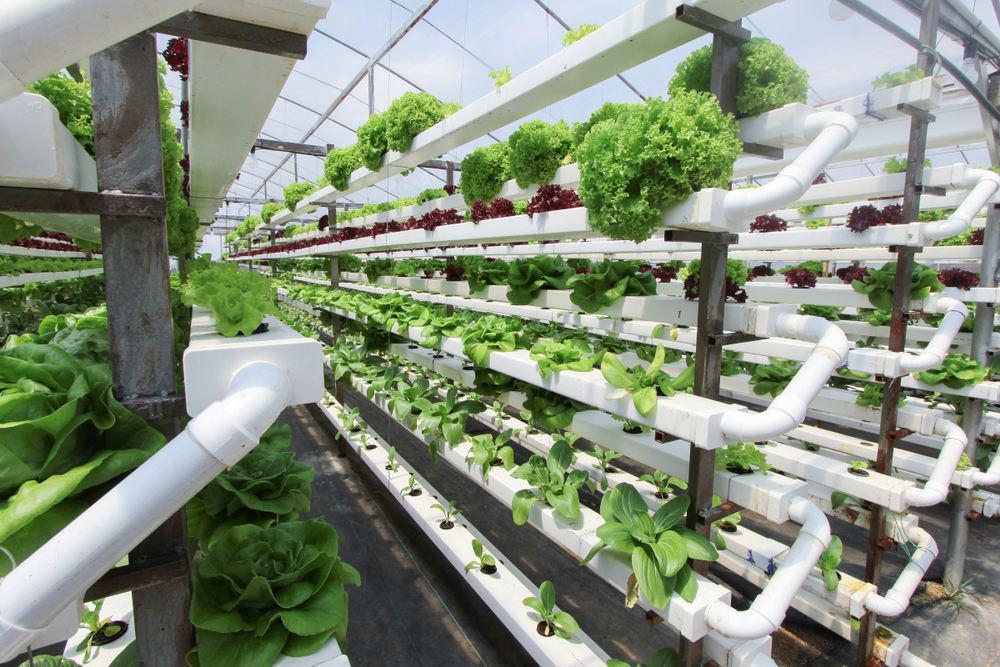Water and land are both receding as the world population goes on increasing. With the increase in population, the responsibility to feed billions of hungry mouths also becomes challenging. So, in the wake of the current situation, do you think that vertical farming could be the perfect alternative? We say yes! We ask why agriculture can’t go vertical when it increases efficiency, saves water, and provides us local and fresh produce. A vertical farm can be placed anywhere indoors. It reduces pressure to clean up massive acres of land as you can grow an array of crops simply by stacking them. This blog highlights how vertical farming solves both land and water scarcity problems.

Solving Water Scarcity Problems
A boon for water-scarce regions
Many areas in the world have been publicized for their severe water woes. That is because agriculture uses 80 percent of the water supply. Yet, farmers are compelled to sacrifice crops and use less water. When water paucity hits the agriculture industry, there is a ripple effect. Confused as to what is that? Well, we mean that the effects are felt globally and regionally. Already over 850 million people go to bed hungry, and less farming could only aggravate food insecurity. Hence, the potent solution is to make use of vertical farming. Have a look at the figure below to understand better.

Vertical farming, thus, is an invaluable resource for regions that are reeling under water scarcity problems. We have to admit that this ingenious farming method has great potential to improve circumstances drastically.
Large-scale agriculture is a reality as water footprint reduces
Ask any researcher, and they will tell you how conventional practices of agriculture are unsustainable. Every year, farmers lose tons of crops because of the hardships they face. Everything, from bad weather to bugs, really takes a toll on agriculture. According to data, farmers in some areas lose as many as 290 million dollars annually, all because of agricultural pests. Some lose because of excess precipitation. Farming is almost a nightmare in areas with harsh summers and winters. So, what do we do in such a situation? The answer is vertical farming.
Vertical farming ensures that you can grow crops all the year-round. Why? That is because you provide your crops the environment that is best suited for their growth. No worrying about pests or harmful weather conditions. You get a credible ROI as you can sell more food crops while observing a decrease in waste.
The best part? You no longer have to pay for any water sources because atmospheric water generation drastically reduces the water footprint.
Here is how:

Relief from disasters and catastrophes
Every year, floods, storms, and hurricanes cause a lot of deluge. Lives are displaced, and we suffer from scarcity of clean water and food. But, if you think differently, you will see that you attain a renewable source of potable water when you deploy vertical farm structures. Not only do you not have to rely on these external resources, but you are also able to produce without any hurdles. Do you feel that we are kidding? Absolutely not! Have a look below.

Vertical Farming : Solving Land Scarity Problems
Marked reduction in the usage of land
Did you know? It is being estimated that by 2050, 60 percent of the global population will live in the cities.
The isolated farms and villages are slowly becoming things of the past. That is because most of the population now resides in places that have been classified as urban. Thus, because of the exploding population scenario, there is significantly less farmable land. Today, the urban and industrial development may have added to our per capita incomes but has reduced spaces. In such a situation, vertical farming is our knight in shining armor.
Things to know: The purpose of vertical farming is to use the least amount of land but produce more food. All you will do is grow crops on a vertical structure.

The vertical farming method is all about sustainability. It aims at using few resources, be it land or water.
Is vertical farming the future for a less spacious world?
The growing population and the diminishing land size are causing devastating effects on resources. The water table is depleting, and there is a shortage of spaces. However, we do believe that vertical farming is a great way to produce food for the future. It solves the problems of conventional farmers, produces more veggies, and wastes a negligible amount of water. Yes, the setup costs can make the method prohibitive. But you cannot deny that the farms are profitable. With time, when technology used in the method advances and becomes a lot more available, vertical farming will be the new norm of agriculture.
Also Read : What Is Dutch Bucket System In Hydroponics?

